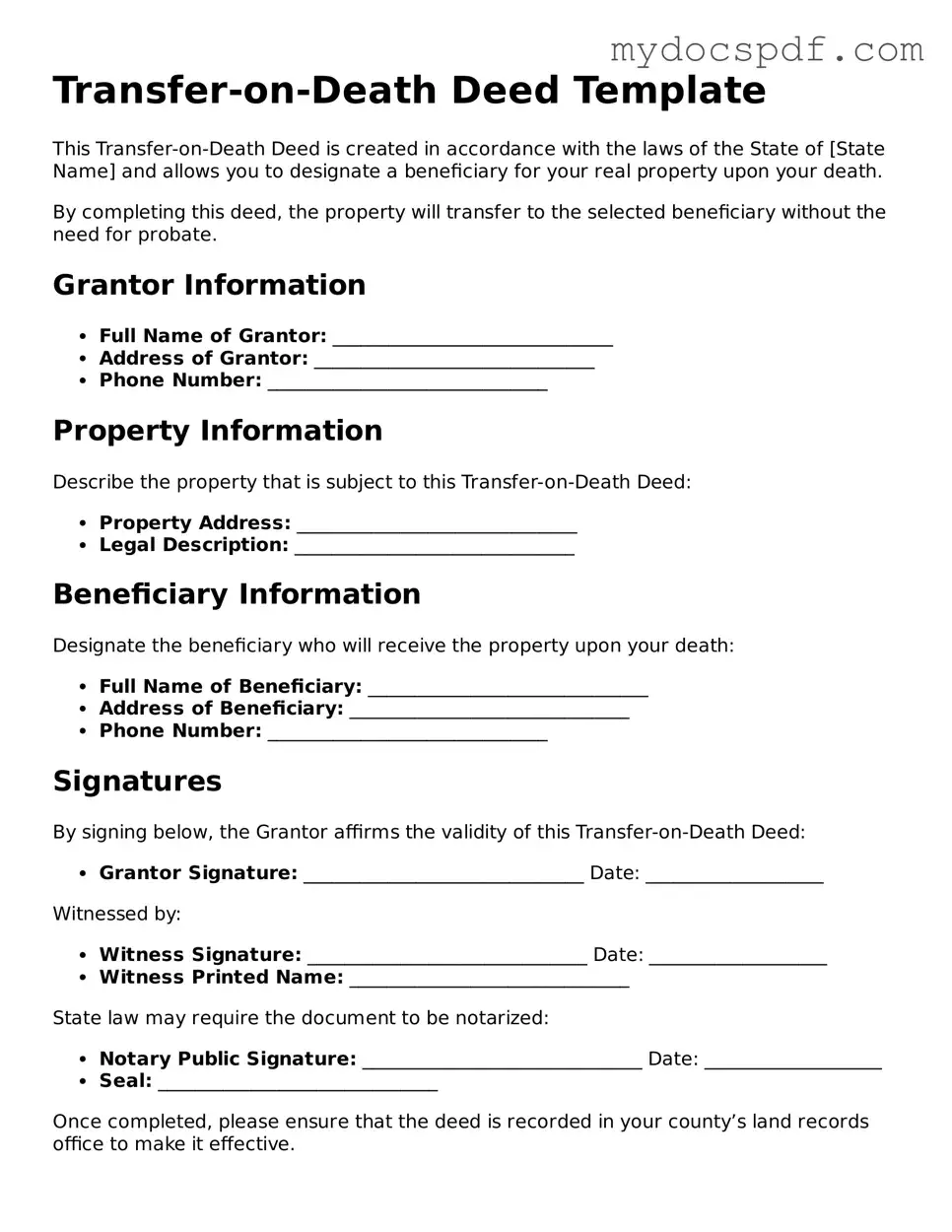Transfer-on-Death Deed Template
This Transfer-on-Death Deed is created in accordance with the laws of the State of [State Name] and allows you to designate a beneficiary for your real property upon your death.
By completing this deed, the property will transfer to the selected beneficiary without the need for probate.
Grantor Information
- Full Name of Grantor: ______________________________
- Address of Grantor: ______________________________
- Phone Number: ______________________________
Property Information
Describe the property that is subject to this Transfer-on-Death Deed:
- Property Address: ______________________________
- Legal Description: ______________________________
Beneficiary Information
Designate the beneficiary who will receive the property upon your death:
- Full Name of Beneficiary: ______________________________
- Address of Beneficiary: ______________________________
- Phone Number: ______________________________
Signatures
By signing below, the Grantor affirms the validity of this Transfer-on-Death Deed:
- Grantor Signature: ______________________________ Date: ___________________
Witnessed by:
- Witness Signature: ______________________________ Date: ___________________
- Witness Printed Name: ______________________________
State law may require the document to be notarized:
- Notary Public Signature: ______________________________ Date: ___________________
- Seal: ______________________________
Once completed, please ensure that the deed is recorded in your county’s land records office to make it effective.
